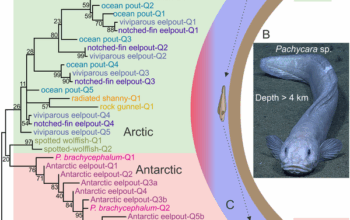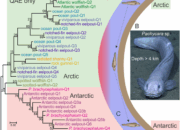In the realm of scientific exploration, where light interacts with matter at staggering scales, the study of nanophotonics emerges as a profound discipline, akin to peering through a cosmic lens at the intricate dance of photons and nanostructures. Such an interdisciplinary field encompasses physics, engineering, and materials science, delving into the manipulation of light on the nanometer scale. With burgeoning applications in data transmission, sensing technologies, and photonic devices, the question arises: what is the best university for learning nanophotonics? This inquiry necessitates an exploration of various institutions, each offering unique strengths and perspectives in this cutting-edge domain.
First, consider the Massachusetts Institute of Technology (MIT), an institution renowned not solely for its groundbreaking innovations but also for the rigorous academic framework it provides. The MIT Department of Electrical Engineering and Computer Science, alongside the Research Laboratory of Electronics, offers an unparalleled education in nanophotonics. Students here benefit from a curriculum that marries theoretical knowledge with practical application, immersed in research opportunities that link them to some of the brightest minds in the field. The metaphorical forge of creativity and knowledge, MIT prepares students to wield the tools of nanophotonics effectively, forging them into pioneers capable of breakthroughs that alter the technological landscape.
Another prominent player in the nanophotonics arena is Stanford University. Nestled in the heart of Silicon Valley, Stanford serves as a breeding ground for innovation, where intellect meets entrepreneurial spirit. The Stanford Nanofabrication Facility and the Stanford Photonics Research Center pave the way for students to engage in hands-on research, fundamentally enhancing their understanding of photonic systems. Here, students do not merely absorb knowledge; they concoct unique experiments, turning abstract theories into tangible results. The ethos of Stanford resonates with its commitment to bridging theory with practice, creating a stimulating environment akin to an alchemical laboratory where light and matter transmute into revolutionary technologies.
Additionally, the University of California, Berkeley, stands out as another bastion of excellence in nanophotonics education. Its materials science program, combined with the Berkeley Nanoscience and Nanoengineering Institute, fosters an intellectual climate that encourages exploration and innovation. Berkeley’s approach encompasses collaborative efforts that engage interdisciplinary perspectives, blending physics with chemistry and engineering. Students experience the synergy akin to a symphony orchestra, where diverse instruments harmonize to create a rich auditory tapestry—each note a breakthrough in understanding the manipulation of light at the nanoscale.
Northwestern University further solidifies its position on this list through its Integrated Imaging and Nanophotonics Initiative. Here, students embark on a journey into the world of advanced imaging technologies and nanophotonic devices. The university’s focus on mentoring and development empowers students to navigate complex challenges with confidence. The research environment at Northwestern can be likened to a lighthouse guiding scholars through the tempestuous seas of discovery, illuminating pathways to groundbreaking advancements in photonic applications.
When evaluating a university’s program in nanophotonics, it is essential to consider not only the curriculum and faculty but also the available research resources and collaborative opportunities. The University of Cambridge excels in fostering international partnerships and offers a robust program that emphasizes nanophotonics in the context of applied physics and engineering. Students can engage with various projects that tackle real-world challenges, such as increasing data transmission efficiency or enhancing solar energy capture. The allure of Cambridge lies in its historical significance as a cradle of scientific discovery, ensuring that students are part of a broader narrative that stretches back centuries while standing on the precipice of future advancements.
Moreover, the EPFL (École polytechnique fédérale de Lausanne) in Switzerland presents an exceptional option for aspiring nanophotonics scholars. With its focus on interdisciplinary research and robust international collaborations, EPFL offers a unique perspective that integrates optics, material science, and engineering. The nexus of innovation at EPFL resembles a crossroad where diverse paths converge, fostering cross-disciplinary creativity and solutions that address societal challenges through photonics.
While these institutions represent some of the best choices for studying nanophotonics, numerous other universities across the globe also contribute significantly to the field. The emergence of strong programs in countries such as Germany, Canada, and South Korea indicates a global commitment to advancing this vital area of study. Each of these locales brings distinct cultural and academic experiences that can enrich a student’s education, much like spices adding depth to a culinary dish.
Ultimately, the best university for learning nanophotonics will depend on an individual’s career aspirations, research interests, and preferred academic environment. While robust institutions like MIT, Stanford, UC Berkeley, Northwestern, Cambridge, and EPFL lead the charge, the landscape is vast and varied. Prospective students must navigate this terrain thoughtfully, weighing factors such as faculty expertise, research facilities, and collaborative opportunities. Encoded within the choice of institution is the potential to transform curiosity into a formidable understanding of how light can be harnessed and manipulated at the nanoscale, shaping future technologies and ultimately, our world.








